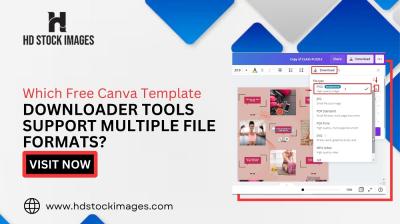Canva is a popular design tool that offers a variety of options for creating custom layouts. One feature that many users find especially useful is the ability to split images. Whether you're working on a social media post, a website design, or a personal project, splitting images can help you create visually appealing, unique layouts. In this guide, we'll walk you through how to split images on Canva and provide tips for getting the most out of this feature. By the end, you'll have the skills to create stunning custom designs with ease.
Why You Might Want to Split Images
Splitting images on Canva can transform a simple picture into a dynamic design element. Here are some reasons why you might want to split your images:
- Enhanced Visual Appeal: Splitting images allows you to create a more engaging layout that catches the eye. It’s a great way to break away from the standard one-image design.
- Better Composition: By dividing an image into parts, you can experiment with different alignments, sizes, and spaces to create a balanced and cohesive design.
- More Flexibility: Splitting images gives you more control over how each section is used within your layout. You can resize, rotate, or reposition each segment for the perfect look.
- Storytelling: A split image can convey a story or message by drawing attention to different aspects of the photo. It’s especially useful in creating gallery-style posts or images that feature multiple focal points.
Also Read This: how to cut image from pdf
Getting Started with Canva for Image Splitting
Before you can start splitting images on Canva, you'll need to set up your design workspace. Here's a quick guide to get you started:
- Create an Account or Log In: If you don’t already have a Canva account, sign up for free at www.canva.com. If you already have an account, just log in.
- Select Your Design Type: Once you're logged in, choose the type of design you want to work on (social media post, presentation, etc.). This will give you a properly sized canvas to start with.
- Upload Your Image: Click on the "Uploads" tab in the left sidebar and select the image you'd like to split. Drag it onto your design canvas.
- Adjust the Image Size: Resize the image by clicking and dragging the corners until it's the size you want for your layout.
Now you’re ready to split your image and start experimenting with different layout designs!
Also Read This: How to Resize PDF Images
How to Upload Your Image to Canva
Uploading an image to Canva is quick and simple, and it's the first step before you can start creating your custom layouts. Whether you're working on a new design or editing an existing project, here’s how to get your image into Canva:
- Open Canva: Log in to your Canva account at www.canva.com. If you don't have an account yet, create one for free.
- Create or Open a Design: Choose the type of design you want to work on, such as an Instagram post, flyer, or poster. If you're editing an existing project, open the design from your dashboard.
- Go to Uploads: On the left sidebar, click the “Uploads” tab. This is where you can manage all of your files.
- Upload Your Image: Click the “Upload files” button, navigate to the image you want to use on your device, and click "Open." You can upload multiple images at once if needed.
- Drag and Drop: Once uploaded, drag your image onto the canvas or click on it to add it to your design.
Now that your image is in Canva, you're ready to start splitting it to create your custom layout. It's a good idea to upload high-quality images for the best results when editing.
Also Read This: Locking an Image in Google Slides
Step-by-Step Guide to Splitting Images on Canva
Now comes the fun part: splitting your image! Canva makes it easy to split your image into sections, so you can create stunning and unique layouts. Follow these simple steps:
- Resize Your Image: First, ensure your image is large enough for the design. Resize it by clicking and dragging the corners.
- Cut the Image Using Canva Grids: One of the easiest ways to split an image in Canva is by using grids. Go to the “Elements” tab, search for "grid," and choose a grid layout that fits your design needs (e.g., two or three sections).
- Drag Your Image into the Grid: Once the grid is in place, drag your image into the grid. Canva will automatically crop the image into the sections of the grid.
- Adjust Each Section: If needed, you can adjust each section by double-clicking on the image and dragging it within the grid. This lets you control how each part of the image is displayed.
- Use the Crop Tool: If grids aren’t your style, you can manually crop the image. Select the image, click on the crop icon, and drag the corners to split it into different parts. Then, move each cropped section into its own position on the canvas.
With these steps, you can easily split an image into multiple parts, creating a visually dynamic and engaging layout. Don’t be afraid to experiment with different grid layouts and cropping techniques!
Also Read This: Adding Transparent Images in Google Slides
Tips for Creating Custom Layouts with Split Images
Now that you know how to split your images, let’s talk about some helpful tips for creating the best custom layouts. These tips will take your design skills to the next level:
- Choose the Right Grid Layout: Depending on how you want to split the image, select a grid that fits your vision. For instance, a 3x3 grid is great for a balanced, symmetrical look, while a 2x2 grid can create a more dynamic and modern feel.
- Maintain Consistency: Ensure the sections of your split image align well with other elements on your design. Keep your layout consistent by maintaining similar spacing and margin sizes between sections.
- Play with Asymmetry: While symmetrical grids look great, don’t be afraid to try asymmetrical layouts. This can give your design an artistic, more interesting touch.
- Use Text and Overlays: Add text, icons, or overlays to complement the split image. Position the text in a way that enhances the sections of the image, but make sure it doesn’t distract from the visuals.
- Focus on the Focal Point: When splitting an image, try to maintain a clear focal point in each section. This ensures the image flows well and tells a cohesive story across the layout.
- Experiment with Effects: Canva offers various effects like filters, shadows, and transparencies. Try applying subtle effects to the split sections to enhance the overall aesthetic of your layout.
By following these tips, you can create more visually appealing and creative custom layouts. Experiment with different techniques to find what works best for your design!
Also Read This: How to Create Edible Images at Home
Common Issues and Troubleshooting Tips
When working with Canva to split images and create custom layouts, you may encounter a few issues. While most problems are easy to solve, it’s helpful to know how to troubleshoot common challenges. Here are some typical problems users face and tips on how to resolve them:
- Image Not Uploading: If your image won’t upload to Canva, make sure it’s in a supported file format (JPG, PNG, or SVG). Also, check your internet connection and try uploading the file again. If the issue persists, try clearing your browser cache or using a different browser.
- Image Quality is Low: If your image appears pixelated or blurry after splitting, it might be due to a low-resolution file. Always upload high-quality images to ensure the best results when editing. You can also resize images within Canva, but be mindful that enlarging them too much can reduce their quality.
- Grid Layouts Not Working: Sometimes, the grid won’t automatically crop the image as expected. Try resizing the image before dragging it into the grid. If the issue persists, manually crop the image and place each part in the desired position.
- Text or Elements Covering the Image: If your text or other design elements are covering the image, right-click the element and select "Send to Back" to push it behind the image. You can also adjust the transparency of the elements to allow the image to shine through more clearly.
- Layout Not Aligning Properly: For uneven or misaligned sections, use Canva's "Position" tool to align objects. This tool can help you make sure everything is spaced evenly and aligned correctly on the canvas.
If these tips don’t solve your problem, check out Canva’s help center or community forums for more troubleshooting assistance.
Also Read This: How to Take the Perfect LinkedIn Photo
How to Save and Download Your Custom Layout
Once you’ve split your image and created the perfect custom layout, it’s time to save and download your design. Canva makes this process straightforward. Here’s how to save your work:
- Save Your Design: Canva automatically saves your design as you work, but it’s always a good idea to double-check. Click the "File" menu at the top-left corner of the screen and select “Save” to ensure your design is up to date.
- Download Your Layout: Once you’re happy with your design, click the "Download" button located in the top-right corner. You’ll have the option to download your design in various formats, including PNG, JPG, and PDF.
- Choose the Right File Type: If you’re planning to use your layout for print, choose a high-quality PDF for the best results. For web use or social media, PNG or JPG formats are ideal. If you need a transparent background, choose PNG.
- Adjust the File Size and Quality: Canva offers options to adjust the file quality. For higher quality and larger files, select the “PDF Print” option. If you want a smaller file size for faster uploads, choose "PNG" or "JPG" with a lower quality setting.
- Download and Save: After selecting your preferred settings, click the "Download" button. The file will be saved to your computer or device, ready for use!
By following these steps, you can save your work efficiently and ensure that your custom layout is ready for sharing or printing. Don’t forget to back up your files to avoid losing your hard work!
Also Read This: How to Rotate Videos in VLC Player for Perfect Playback
FAQ
Here are some frequently asked questions to help you with any doubts or issues you may have when splitting images and creating custom layouts in Canva:
- Can I split an image into more than two parts in Canva? Yes, you can split an image into as many parts as you need. Use grids for a quick split, or manually crop the image into smaller sections for more flexibility.
- What is the best image resolution for Canva? For the best quality, upload images with a resolution of at least 300 DPI. This ensures your designs look sharp, whether they’re printed or shared online.
- Can I add animations to my split images? Yes, Canva offers animations that can be applied to individual image sections. These can be used to make your design more dynamic, especially for presentations or social media posts.
- Why isn’t my image fitting into the grid? If your image isn’t fitting into the grid, make sure it’s properly sized. Resize it manually by dragging the corners or adjust the grid to fit the image. You can also try cropping the image before inserting it into the grid.
- Can I split images in Canva Pro only? No, Canva’s basic features, including image splitting with grids and cropping, are available in both free and Pro versions. However, Pro users have access to additional tools like background remover and premium grids.
If you have more questions, be sure to check out Canva’s help center or community forums for more in-depth support!
Conclusion
Splitting images on Canva for custom layouts is a powerful and creative way to enhance your designs. Whether you're creating social media posts, marketing materials, or personal projects, this tool allows you to experiment with different compositions and layouts. By following the step-by-step guide and troubleshooting tips provided, you can overcome any challenges and create eye-catching, professional-looking designs. Remember to save your work regularly, explore Canva's various features, and experiment with different grid layouts, crops, and effects to achieve the best results. With a little practice, you'll be able to create stunning custom designs that stand out and capture attention.
 admin
admin








